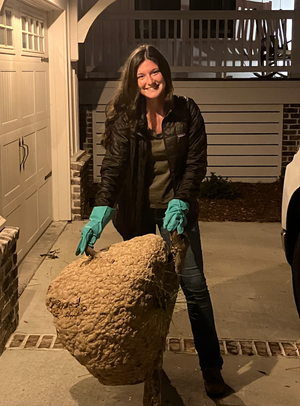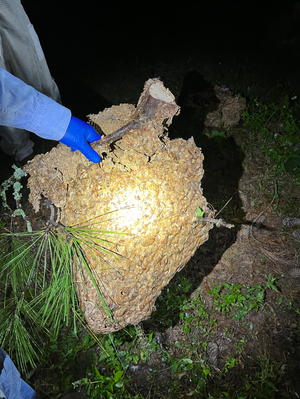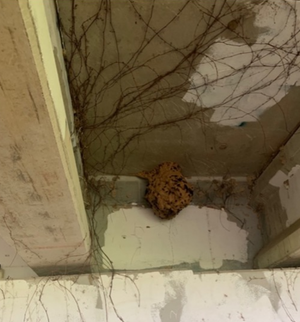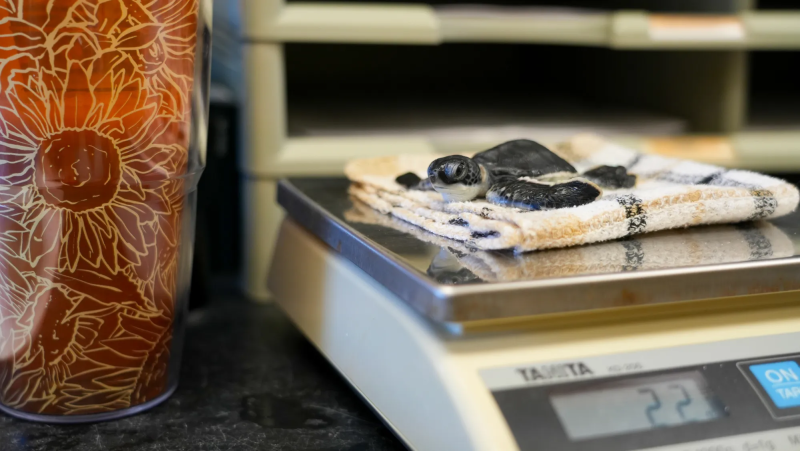Yellow-legged hornets, murder hornet's relative, found in Georgia, officials want them destroyed
Authorities in Georgia are asking the public for help tracking a growing invasive hornet species that preys on honeybees and other pollinators and, if allowed to continue to flourish, could threaten agriculture − the state's main economic driver.
The move comes after the Georgia Department of Agriculture eradicated a yellow-legged hornet's nest reported by a resident at a home in greater Savannah on Monday, state DOA spokesperson Matthew Agvent said Thursday.
The insect is a close relative of the "murder hornet".

Sixth nest destroyed in US found in Georgia
The nest destroyed marks the sixth discovered and destroyed in United States since last summer, state land management officials confirmed to USA TODAY.
As of Thursday yellow-hornet nests had only been discovered in Georgia.
"A couple yellow-legged hornets have been found in the neighboring part of South Carolina, but they have not found any nests on their side," Agvent said.
"The five nests we found last year were those larger secondary nests and the nest that was located and destroyed on Monday was an embryonic nest," Agvent added.
Can cicadas bite?How to prepare when 'trillions' are expected to descend this summer
When was the first yellow-legged hornet nest found?
The first yellow-legged hornet nest was spotted in August by a Savannah beekeeper who reported the sighting to the state agency. The agency, partnered with the University of Georgia and the U.S. Department of Agriculture (USDA), said the finding marked the first detection of the non-native species in "the open United States."
Last month the department capturred a yellow-legged hornet queen in Jasper County and eliminated it's nest the Bluffton Today, part of the USA TODAY Network reported.
In addition to threatening domestic and feral honey bees, according to the USDA, the hornets threaten crops.
It was not immediately known how the invasive insects made their way the U.S. soil, but University of Georgia (UGA) scientists found evidence suggesting they originated in Asia.
The 2024 cicada invasion:How to save your trees and shrubs from damage
Georgia stepping up efforts to track, kill yellow-legged hornets
This week, Georgia Agriculture Commissioner Tyler Harper said the agency, in coordination with federal and state partners, is "significantly stepping up" efforts to eradicate" the yellow-legged hornet from Georgia.
The department, according to land management officials, is increasing the number of traps in the Savannah area 170 in 2023 to more than 1,000 traps this year.
Harper also said the department is hiring additional staff and plans to use "new, cutting-edge technology" to eradicate the insects.

Crews plan to use new trackers to track the invasive species back to their nests using trackers lighter (.15 grams) than previous trackers used last year (.31 grams), the department said, adding the heavier trackers impacted the hornets ability to fly and impacted the agency's ability to track the hornets.
The trackers are equipped with wing sensors calibrated to recognize the unique frequency wingbeat of yellow-legged hornets in an effort to alert teams on the ground when they detect the insect's activity.
"This invasive pest is a threat to native pollinators and our state’s number one industry, agriculture, and we continue to ask for the public’s help as we do everything in our power to achieve complete eradication," Harper said.

What does a yellow-legged hornet look like?
The yellow-legged hornet is wasp species can grow up to an inch long, according to the nation's Animal and Plant Health Inspection Service (APHIS).
Their nests, which are large and contain up to 6,000 workers, are made above ground from "paper-like material" and in addition to trees, can be found on garages, barns and sheds.
When do yellow-legged hornet queens emerge?
Mated queens emerge in the spring to find a food source, establish an embryonic nest, and begin producing workers, land management officials said. Once the colony has grown enough, they will establish a much larger secondary nest in the summertime.
"In our experience these secondary nests are typically located about 80 to 100 feet high in a tree," Agvent said.
According to APHIS, the species was first spotted in the U.S. in August 2023 when a beekeeper in Savannah reported an unusual hornet on his property to the Georgia land management officials.
Agency staff and pest management professionals destroyed the nest on Aug. 23 in a residential neighborhood on Wilmington Island.
After that nest was eradicated, scientists Lewis Bartlett with UGA and Jamie Ellis with the University of Florida examined it and identified developing hornets within the nest but found no evidence of reproductive males or queens in the colony.

Natalie Neysa Alund is a senior reporter for USA TODAY. Reach her at nalund@usatoday.com and follow her on X @nataliealund.
Disclaimer: The copyright of this article belongs to the original author. Reposting this article is solely for the purpose of information dissemination and does not constitute any investment advice. If there is any infringement, please contact us immediately. We will make corrections or deletions as necessary. Thank you.





